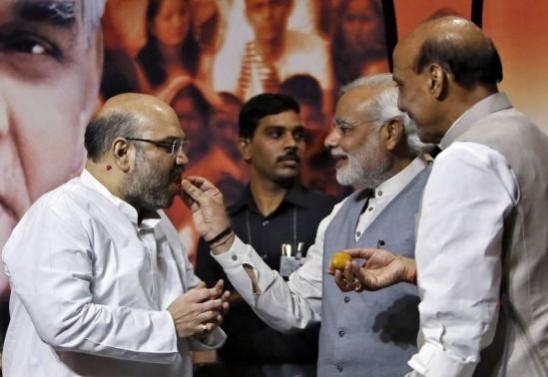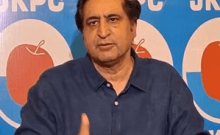
While the focus remained on Ahmed Patel's hard-won victory in the just concluded Rajya Sabha election from Gujarat, BJP president Amit Shah's maiden victory in an election to the Upper House is no less significant. It also came around a time when he completed three years as the president of the BJP.
The victory in the Rajya Sabha election can be seen as a reward that Shah deserved after his effective service as the president of the saffron party. The man, who was known for his controversies during his stint in Gujarat, saw a tremendous transformation from a local leader into one of national significance. In Prime Minister Narendra Modi's times, no other politician is considered taller then Shah after the PM himself.
In these three years, 52-year-old Shah has travelled across the country to participate in 800 organisational meetings at various levels for micro-management during elections besides addressing nearly 600 rallies and also coordinating between the party and government through meeting the PM and other important central ministers. His role as the head of the party has been no less crucial than that played by Modi as the head of the government.
BJP has grown under Shah's leadership...
For many, Shah's credibility lies in the fact that the BJP has really grown under his leadership. He started giving BJP memorable victories even before becoming the party's president (like winning 71 out of 80 seats in UP in the 2014 Lok Sabha elections) and continued with his good show after taking over the responsibility a couple of months after Modi became the PM.
Shah's two big failures were in Delhi and Bihar Assembly elections in 2015 but in 2017, even those were overcome with the neutralisation of Arvind Kejriwal and Nitish Kumar.
The BJP came to power with its own majority in Uttar Pradesh, something which is by no means an easy feat, besides several others for the first time and Shah made it possible through hard work and precise execution of plans.
List of BJP presidents (since 1980 when the party was formed)
- Atal Behari Vajpayee (1980-86)
- Lal Krishna Advani (1986-1991)
- Murli Manohar Joshi (1991-93)
- Lal Krishna Advani (1993-98)
- Kushabhau Thakre (1998-2000)
- Bangaru Laxman (2000-2001)
- Jana Krishnamurti (2001-02)
- Venkaiah Naidu (2002-04)
- Lal Krishna Advani (2004-06)
- Rajnath Singh (2006-09)
- Nitin Gadkari (2009-13)
- Rajnath Singh (2013-14)
- Amit Shah (2014 onwards)
... and the man has also given the president's post a significant meaning
But apart from that, Shah's importance also lies in the fact that he has given the post he holds a stability and identity of its own. Prior to Shah's ascent, the post of BJP's president saw incumbents changing frequently. After Lal Krishna Advani's five-year tenure as the BJP president got over in 1998, the party saw as many as eight presidencies of the party till 2014 when Shah took over. The position had also remained largely eclipsed by the shadow of the BJP prime minister or the party's top brass in those days.
During the reign of Atal Behari Vajpayee, not many had given a thought to the importance the BJP's president had. After Vajpayee was voted out in 2004 and till Modi's rise to power a decade afterwards, as many as four presidents took charge one after another but never could play any meaty role. The BJP in those days was plagued by several internal issues and the president mostly struggled to balance all quarters.

Shah's arrival changed all of that. Both Modi and Shah wonderfully complemented each other and made each other's work easy. If Vajpayee and Advani were the two prominent faces of the BJP till 2004, Modi and Shah have played the same roles since 2014 although in the latter case, a hierarchy prevailed unlike in the previous instance.
With Shah now entering the Rajya Sabha, his responsibility will multiply but it will also give him the opportunity to checkmate the Opposition inside Parliament, as he has been doing outside. The absence of key Opposition leaders like Mayawati and Sitaram Yechury will also make his work easier.

















